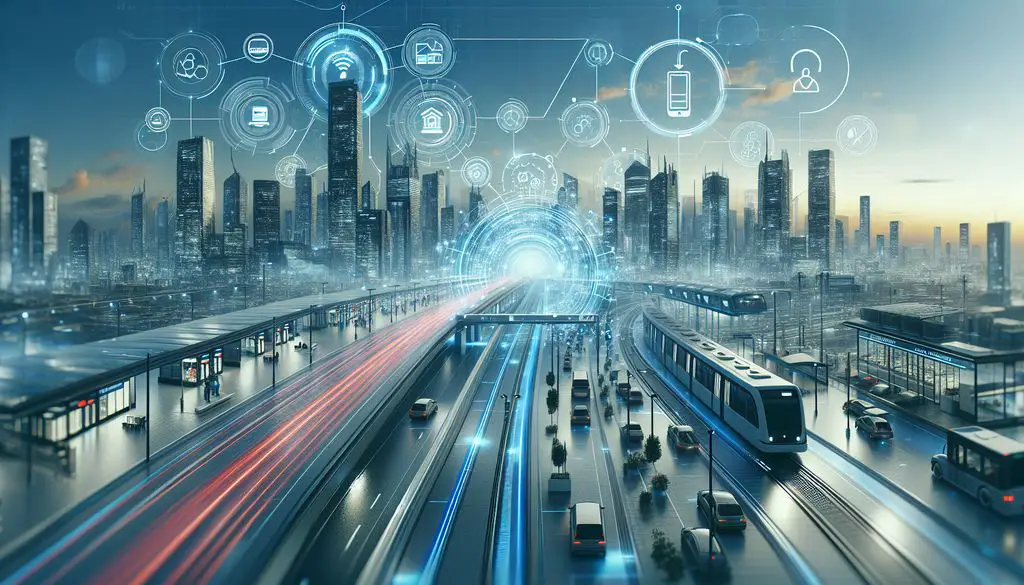Sustainability is no longer a fringe concept—it is the cornerstone of modern business strategies. Circular business models have emerged as transformative frameworks to mitigate environmental harm and enhance sustainability. These approaches extend beyond simple recycling efforts, embracing strategies like product ownership retention, lifecycle extension, and recycling-centric design.
This comprehensive exploration unveils the undeniable importance of circular business models in fostering sustainable technologies, their synergistic potential with advanced technologies, and the pathways to their successful implementation.
Empowering Progress: Why Circular Business Models Are Indispensable
Circular business models tackle pressing global challenges, such as resource scarcity, pollution, climate change, and economic inequality. They provide actionable frameworks that align with sustainable development while simultaneously driving innovation and profitability.
A Multidimensional Approach to Sustainability
- Addressing Global Challenges:
Circular models reduce dependency on finite resources and harmful materials, slash greenhouse gas emissions, and foster equitable opportunities across societal strata. - Alignment with Global Goals:
These models resonate with the United Nations Sustainable Development Goals (SDGs), which aim to eradicate poverty, safeguard the planet, and ensure prosperity for all. - Competitive Advantages for Businesses:
Organizations adopting circular principles enjoy numerous benefits, including reduced operational costs, enhanced revenue streams, and stronger customer loyalty. Moreover, the focus on sustainability-driven innovation fosters adaptability and long-term growth. - Accelerating Disruptive Technologies:
Circular frameworks not only nurture emerging technologies but also help secure funding, boost credibility, and transition innovations toward market viability.
The Synergy of Circular Economy and Sustainable Technology
The interplay between circular economy principles and sustainable technology offers a blueprint for systemic change, creating ecosystems that are resilient, resource-efficient, and waste-free.
Mutually Reinforcing Concepts
- The Vision of Circular Economy:
The circular economy emphasizes keeping products and materials in continuous use, maximizing value extraction while minimizing waste generation. - The Role of Sustainable Technology:
Advanced tools such as renewable energy systems, biotechnology, and nanotechnology empower businesses to implement circular principles seamlessly.
Unlocking Value through Integration
When these concepts merge, they unlock new sources of value, fostering an ecosystem where waste is designed out, resources are regenerated, and economic opportunities flourish. This partnership holds the key to a prosperous and resilient future.
Real-World Applications of Circular Business Models
The diversity of circular business models demonstrates their adaptability across industries. Some examples include:
| Industry/Domain | Circular Approach |
|---|---|
| Electric Vehicles (EVs) | Battery recycling agreements and buyback programs for creating sustainable EV ecosystems. |
| Waste Upcycling | Transforming hard-to-recycle waste (e.g., cigarette butts, e-waste) into new products. |
| Smartphones | Developing modular, repairable devices using ethically sourced materials. |
| Repair and Refurbishing | Extending the lifecycle of electronics to minimize waste and conserve resources. |
These examples illustrate how circular models enable businesses to reimagine product lifecycles, generate new revenue streams, and empower consumers to make environmentally conscious decisions.
Debunking Misconceptions about Circular Business Models
Misunderstandings about the applicability and feasibility of circular business models often hinder their adoption. Addressing these misconceptions is critical to advancing their implementation.
- “Circular Models Are Industry-Specific”:
Circular principles transcend sectors, proving valuable for any business reliant on resource utilization or production. - “Circularity Is Too Complex”:
Adopting circular models need not involve radical overhauls. Businesses can begin with incremental steps, scaling initiatives as the benefits become apparent.
Mitigating Rebound Effects in Circular Models
While circular business models can substantially reduce environmental impacts, they are susceptible to rebound effects, where increased efficiency inadvertently leads to heightened consumption. A holistic approach is vital to prevent such pitfalls.
Preventing Rebound Effects
- Educating Consumers:
Raise awareness about the environmental and societal consequences of overconsumption. Promote sufficiency over materialism. - Policy Interventions:
Introduce regulations that reflect the true cost of resource usage, including taxes and incentives to promote sustainable practices. - Cultural Shifts:
Encourage shifts in social norms toward valuing well-being and ecological preservation over unchecked growth.
By combining circular models with complementary measures, businesses can enhance their impact on the triple bottom line of sustainability—environmental, social, and economic well-being.
Guidelines for Implementing Circular Business Models
Developing and adopting circular frameworks requires a nuanced understanding of the challenges and strategic planning to address them effectively.
Key Factors for Consideration
| Challenge | Description |
|---|---|
| Design Complexity | Balancing product functionality and user experience while ensuring repairability and recyclability demands sophisticated design strategies. |
| Supply Chain Coordination | Establishing a closed-loop supply chain requires robust collaboration among stakeholders and investments in material recovery systems. |
| Consumer Behavior | Overcoming resistance to circular practices demands awareness campaigns and incentives for adoption. |
| Regulatory Hurdles | Compliance with waste management laws and recycling standards can add operational complexity. |
| Financial Viability | Transitioning may necessitate upfront investments in technology, infrastructure, and workforce training, potentially affecting short-term profits. |
| Technological Limitations | Leveraging cutting-edge technologies for recycling and remanufacturing is essential but may be resource-intensive to develop and deploy. |
| Market Demand | Aligning offerings with evolving consumer preferences requires agile market analysis and responsive product development strategies. |
Strategic Pathways to Overcome Challenges
A holistic approach is indispensable to addressing these challenges. It involves:
- Innovative Design: Focus on creating products that are both high-performing and sustainable.
- Streamlined Supply Chains: Develop collaborative ecosystems for material recovery and reuse.
- Consumer Engagement: Leverage marketing and education to inspire behavioral shifts.
- Regulatory Navigation: Build compliance mechanisms that streamline adherence to environmental laws.
- Financial Planning: Establish funding models to ensure both short-term feasibility and long-term growth.
- Technological Advancement: Invest in research and development to access cutting-edge recycling technologies.
- Market Responsiveness: Continuously align product offerings with dynamic consumer demands.
Final Thoughts: A Blueprint for the Future
The transition to circular business models is not just a necessity—it is a monumental opportunity. By fostering innovation, promoting sustainability, and reshaping consumer behavior, businesses can contribute to a future where economic growth and environmental preservation coexist harmoniously.
As the saying goes, “Sustainability is not a burden; it is the cornerstone of progress.” Adopting circular principles allows businesses to redefine their role in the global economy, creating lasting value for themselves, their consumers, and the planet.



